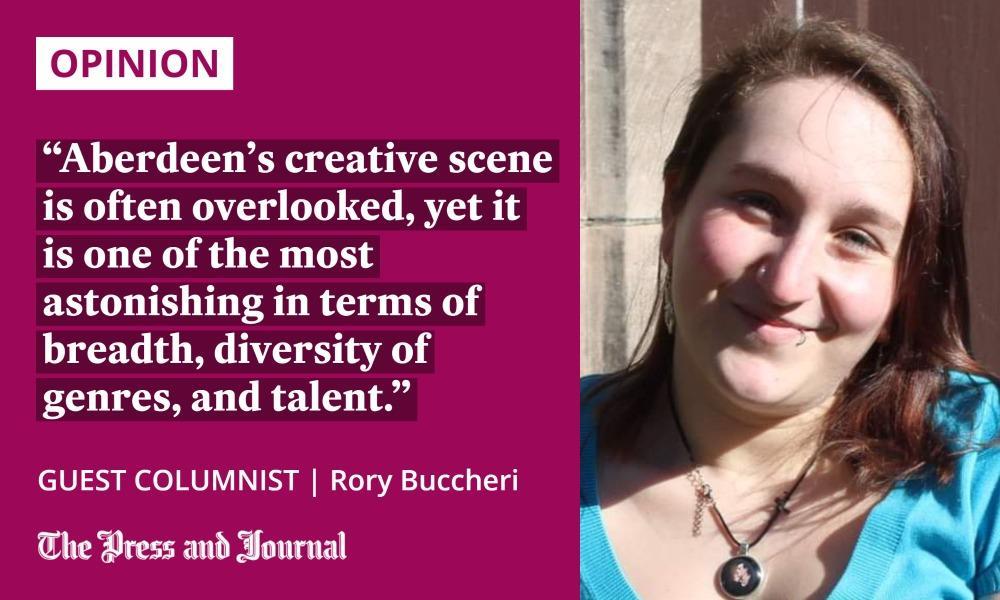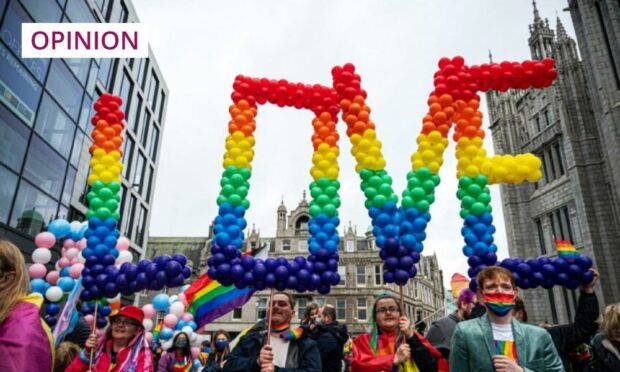Grampian Pride has just confirmed that it will return this summer, taking place on May 28.
The parade is always a joyous and colourful event, and a moment in which the LGBTQ+ community and allies come together. Alas, this event only happens once a year.
The local club scene is fun, and Cheerz Bar has certainly stepped up its game recently, but it’s not enough. Aberdeen needs a more durable space in which queer people can come together and thrive. More than that, the city needs a place where they can create.

From what I have seen happening on stages across the city for the past five years, I can say with confidence that, when queer creative spaces are thriving, the entire city benefits.
Aberdeen’s creative scene is often overlooked, yet it is one of the most astonishing in terms of breadth, diversity of genres, and talent. From Speakin’ Weird to Poetry at Books and Beans, from Hysteria to LitSoc Performance Nights, there isn’t a venue in town that hasn’t seen some of the most talented people share their amazing work.
But, one piece of the puzzle is missing. Once upon a time, among these legendary events, there was one organised by and for a queer creative collective, going by the name of Fruit Salad.
Poignancy and fierce energy
Fruit Salad was relatively short-lived, running from April 2019 to February 2020, yet it gave us unforgettable takes on a variety of themes that the city holds close to its heart.
In one night, you’d see someone perform a Doric poem about coming out, a sci-fi short story about seagulls becoming the dominant species, and a stand-up act in Scots, addressed to Nicola Sturgeon, about how Scotland is open to all. It was fun, it was light, and it was absolutely eye-opening.
For one night only, on April 15, I was lucky enough to see something like that happen again. Organised by Aberdeen Performing Arts and Sanctuary Queer Arts, a cheeky event named Eat the Rich! promised to be a “climate cabaret” with an entire set of queer musicians, poets, thinkers, and dancers performing at the Lemon Tree.
I was blown away by the talent of the performers, but, among the many talented Scottish people appearing, only a few were from the Aberdeen scene.
All different pieces of the puzzle fit together, and soon it was clear to the audience that all things are connected and intersectional. This is what queer spaces are all about
The show made me feel nostalgic. The poignancy and fierce energy of the performances reminded me of how important it is to have queer creative spaces in the city.
Each artist on stage that night gave their own take on climate justice, whether it was a speech about Aberdeen becoming a world leader in renewable energy, a song for solidarity to refugees and migrants, or a drag performance criticising ego-inflated billionaires while provoking laughter.
All different pieces of the puzzle fit together, and soon it was clear to the audience that all things are connected and intersectional. This is what queer spaces are all about.
Queer creatives have done Aberdeen (and Scotland) proud
What happened to spaces like Fruit Salad? And where do queer creatives go now if they want a safe space where they can share and be surrounded by people who see the world through a similar lens?
A revival would mean not only having a safe space where the community comes together, but also one in which people can share their work and improve. This was always one of the premises at Fruit Salad, and one of the things I cherished and miss the most.
It’s important to mention that many in the queer creative workforce do the city justice, and truly represent the great things Aberdeen is capable of.
Hannah Nicholson aka @tattooedselkie is next up on our #WriterShowcase stage.
Originally from Shetland, Hannah is a graduate of @aberdeenuni’s MLitt in Creative Writing and is now a ‘weel kent faess' in Aberdeen's spoken word scene.
Enjoy an extract from ‘Magnie’s Boat’. pic.twitter.com/KB8Lerrrt0
— Scottish Book Trust (@scottishbktrust) April 6, 2022
They go on to win a Scottish Book Trust New Writer Award, like Hannah Nicholson did in 2021, or are recipients of Aberdeen Art Gallery’s micro-commissions and founders of a feminist, grassroot movement, like Mae Diansangu. They are talented multi-instrumentalists like Jamie McCormick, and beloved comedians like Violet Wilde.
They all started from small stages, and from places where they felt accepted. Chances are, they were present in those queer creative spaces that seem to have died out in the city.
Those spaces are unique. There is a flow of new ideas, a pushing of boundaries, that doesn’t happen anywhere else.
It’s in the new nuances of the word “queer”. It means intersectionality. It means community and togetherness. It means creating.
It means: pay attention to what is important now. Share, rejoice, and think. Then, act.
Rory Buccheri is a freelance journalist, passionate about all things arts and food-related in the north-east of Scotland



Conversation